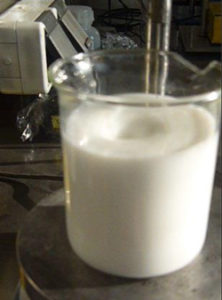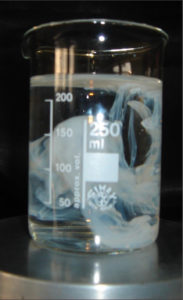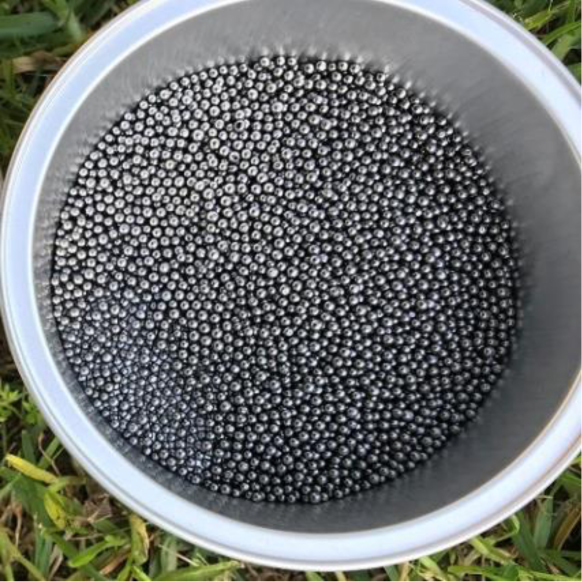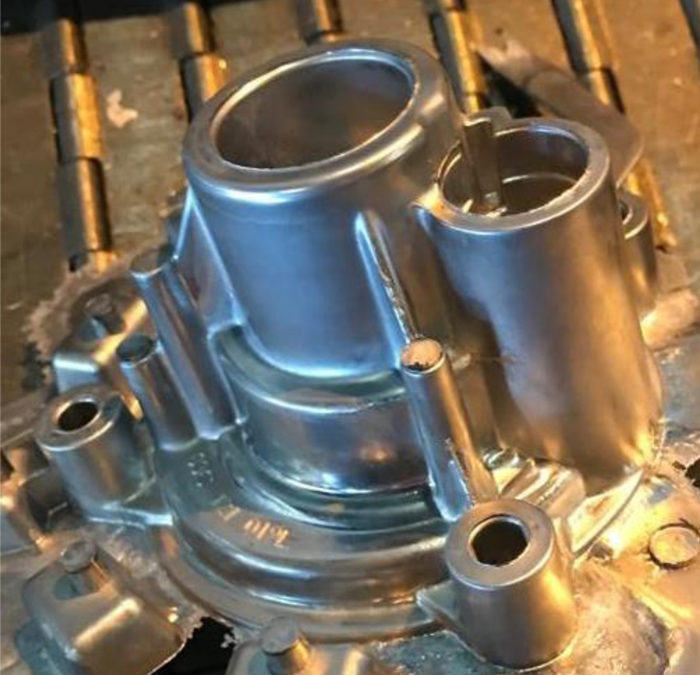The answer is simple:
It is essential to have the right combination of RELEASE AGENTs and PLUNGER LUBRICANTs.
The above castings have been produced with FOCHEM’s unique release agent ISOLAT 4007N in conjunction with the plunger beads ISOLAT 80 G.
General
It is common knowledge, that virtually all release agents, plunger lubricants and greases do contain different kinds of waxes, polymers, mineral oils, vegetable oils and resins. All these raw materials are so-called “poly-hydrocarbons”. The evaporation point is between 250 and 320°C.
During the aluminium die casting process, apart from high pressures, temperatures between 300 and 700°C do occur, causing a de-polymerisation and combustion of the poly-hydrocarbons into a number of gases, e.g. methane, ethane, carbon monoxide, hydrogen and others. Some of the gases burn off, the remainder will be trapped inside the casting, causing pinholes and porosity and streaky surfaces. The leftovers after the burning of hydrocarbons are carbonaceous substances (soot or ash) that are leaving ugly brown spots on the castings surfaces behind.
Release Agent “ISOLAT 4007N”
This is a hydrophobic dispersion based on synthetic fluids; it does not contain waxes or other hydrocarbons. This explains, why the castings obtained are shiny bright and the surfaces are spotless.
What is “hydrophobic”? Hydrophobic literally means “the fear of water”.
Hydrophobic molecules, for example fine wax powders, do not mix with water, but they can nevertheless be dispersed in water with the help of so-called dispersing agents. Such wax dispersions are commonly used in release agents today.
A die-casting release agent has 2 functions:
- The formation of a release film on the die face in order to prevent the sticking of the aluminium- or magnesium casting
- Cooling of the dies.
The water in that case merely serves as a vehicle to convey the fine organic molecules by mean of spraying to the die surface. The water evaporates after spraying, and the actual release film is left behind.
The hydrophobia of a release agent is of vital importance, because the coating formed during spraying will instantly become water repellent. If this is not the case, e.g. if the release agent is “hydrophilic”, the initial coating will re-dissolve during subsequent spraying, washed off and pushed into areas of the die, where it is not wanted.
In general wax dispersions perform well as release agents in die-casting, but they have one big drawback: The wax particles are likely to block the spray nozzles of the spray system and they severely soil the machine and the environment.
The production technology of hydrophobic wax dispersions is common knowledge. Aqueous wax dispersions are fairly stable in water, because the particles are solids. When they get in contact with each other, they do not form agglomerates. The situation is different with oils. When a droplet of oil touches another droplet, they will amalgamate and form a larger droplet and so on.
Therefore the manufacture of stable hydrophobic oil dispersions in water (without the use of emulsifiers) is far more difficult.
FOCHEM INTERNATIONAL have succeeded in the development of a novel technology for the manufacture of hydrophobic oil-fluid-based dispersions. The oil droplet are of colloidal size. The dispersion can be further mixed with water at any ratio.
Plunger Beads “ISOLAT 80 G”
This is a unique lubricant with a 20 % graphite content, the highest percentage of all beads manufactured today.
It is important to apply the beads at the very moment the plunger is withdrawn. Because then the shot sleeve is very hot, and there is enough time left for the synthetic wax of the beads to burn off, leaving nothing else behind but a very smooth graphite.
Release Agent mixed with water
ISOLAT 4007 N 1 : 60 – 80
Concentrate

Ready for spray dispersion

+ ISOLAT 80 G plunger beads, ranging in sizes from Dust to 3 mm, neatly sieved.


